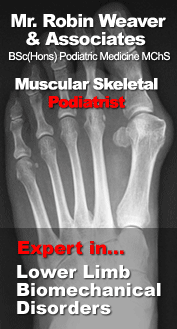 Runners Knee
Runners Knee
 The
patella (kneecap) is situated in a groove of the femur called
the trochlear groove. Throughout walking or running, the patella
must be aligned centrally in this groove. The
patella (kneecap) is situated in a groove of the femur called
the trochlear groove. Throughout walking or running, the patella
must be aligned centrally in this groove.
The patella tracks in an upward and downward motion through
the groove. Problems and pain result however, when the patella
is not tracking vertically in this groove but rather laterally,
or sideways.
In this case, two bony surfaces, the trochlear groove and
the underneath surface of the patella rub against each other,
creating a friction type of pain known as patella femoral
pain, or 'runners knee'.
SYMPTOMS
The knee is by far the most common location for running
injuries. Between 30 and 35% of all running injuries occur in the knee.
The most common diagnosis is patella femoral pain, or runner's
knee. Runners describe this type of pain as a diffuse, hard to localise
pain around (and often underneath the surface) of the patella
or kneecap.
The pain can be sharp or dull, and is most frequently
during running.
CAUSES
Various factors can contribute to this problem but most common
is subtalor pronation (an unwanted rolling-in motion within the
ankle joint.) This source of many running injuries begins
at the foot and leads sequentially up the leg. Pronation usually
begins at heel strike.
A normal lateral (outside) heel strike contorts to excessive
medial or inside roll of the midfoot. As the foot rolls toward
the inside, the lower leg, tibia, and fibia also roll inward,
thereby forcing the knee and patella to roll medially.
Another
possible contributing factor to this problem can be weak vastus
medalis muscles (the inner aspect of the quadriceps). These
muscles normally hold the patella in a vertical position throughout
walking or running.
TREATMENT
Treatment will vary depending on the cause. If the
symptoms are caused by a muscle imbalance an exercise
programme will be prescribed to correct any such imbalances.
If the symptoms are caused by pronation within the subtalor
joint, medically prescribed orthotics are used to minimize subtalor pronation, and thereby stop the adverse internal rotation
of the leg.
By preventing the knee from rolling medially, the patella
is allowed to track vertically, again minimising the patella
femoral pain.
Use a prefabricated pronation control orthotic such as the Orthosport Activ-8 ™ orthotic, a perfect choice for moderate over pronators. The orthotic will help reduce rotational forces which are responsible for patella mal-tracking. |

